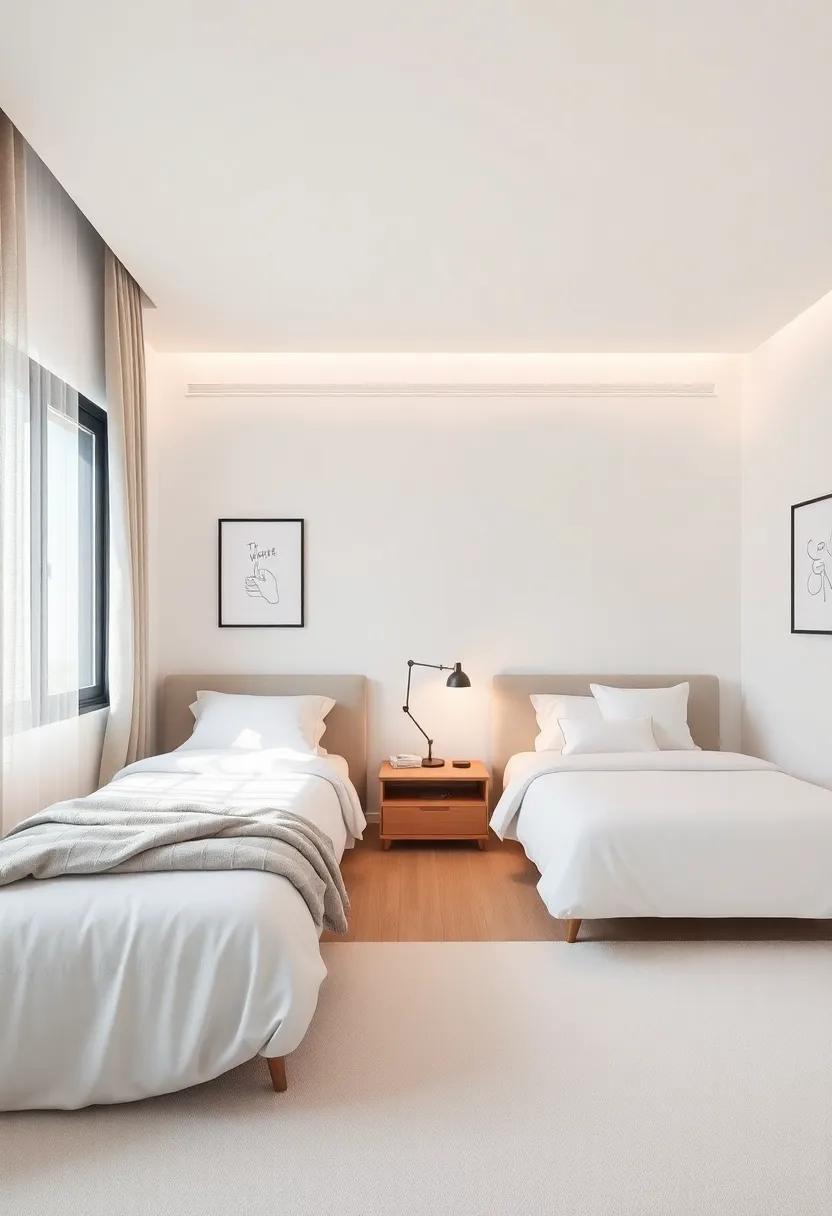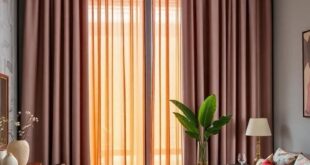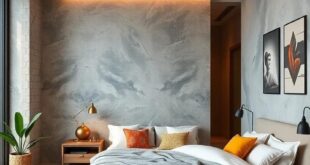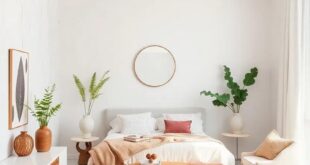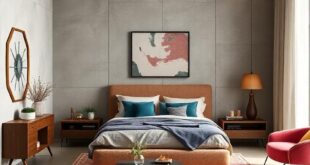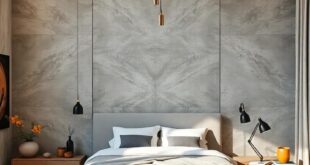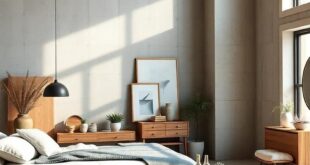In the ever-evolving world of interior design, the challenge of creating a harmonious shared bedroom is a task that blends creativity with practicality. Whether it’s siblings sharing a room, college roommates finding common ground, or couples navigating their distinct styles, maximizing space while fostering a sense of tranquility is key to achieving a blissful retreat. In this article, we’ll explore innovative layout ideas and design principles to transform any shared bedroom into a sanctuary of comfort and style. From clever storage solutions to thoughtful zoning, join us as we delve into the art of harmonizing personal tastes and functional needs, ensuring that every square foot works in perfect unison. It’s time to unlock the potential of your shared space and embrace the joy of living together in thoughtful, well-designed harmony.
Creative Zoning: Dividing Space with Furniture Placement for Shared Bedrooms
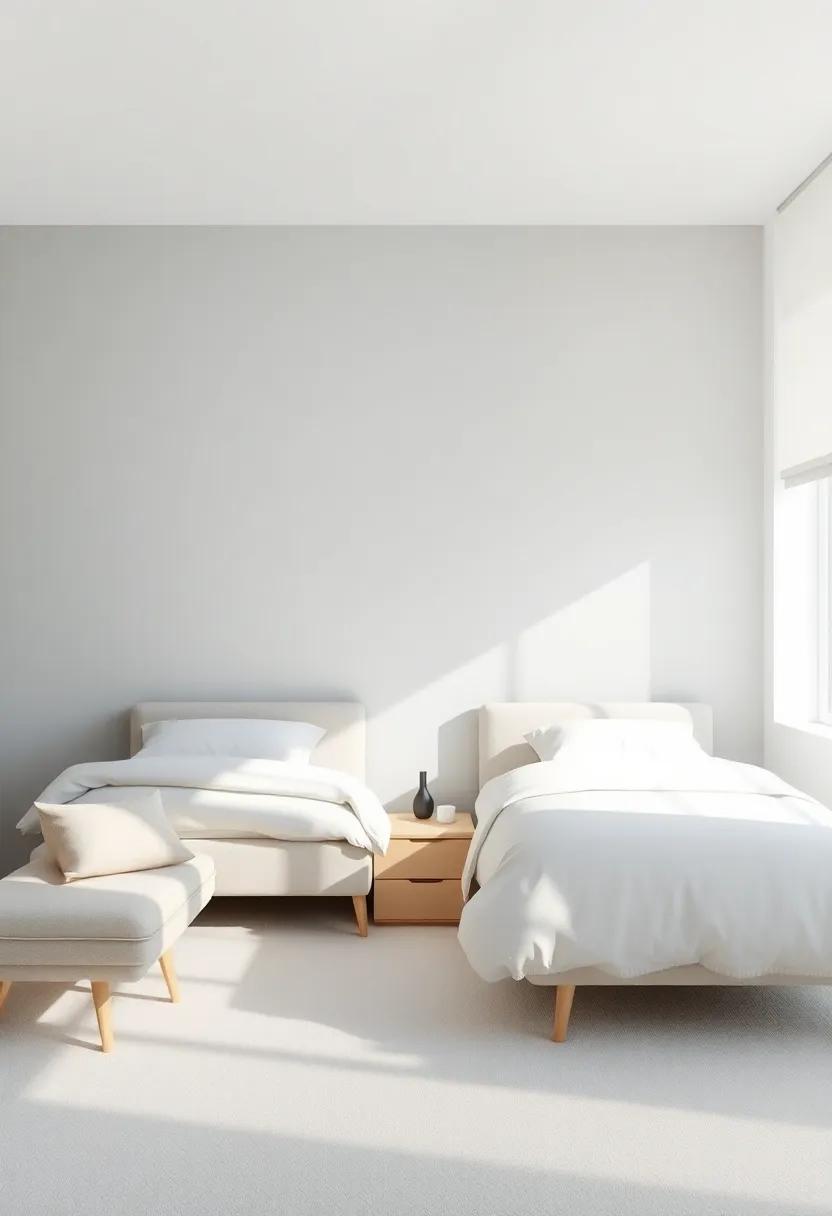
Transforming a shared bedroom into a harmonious space involves more than just choosing the right decor; it’s about strategically placing furniture to create functional zones. To begin, consider dividing the room into distinct areas that cater to each occupant’s needs. Essential pieces such as beds, desks, and chairs can be arranged to define personal spaces while maintaining openness. Here are a few clever ideas to achieve this:
- Bed Placement: Position beds parallel or facing each other with a bedside table in between to promote a sense of intimacy and privacy.
- Work Zones: Utilize corners or sections of the wall for individual desks, ensuring ther’s plenty of natural light for each side.
- Storage Solutions: Incorporate multi-functional furniture like under-bed storage or shelving units that serve as room dividers without obstructing light.
Another creative approach involves vertical space utilization. When floor space is limited, look up! Tall shelves or bookcases can not only provide storage but also act as a visual barrier, allowing each person to feel compartmentalized without the need for full walls.Keep in mind the importance of color and decor, as lighter hues and shared artwork can unify the space while still allowing for individuality. Here’s a quick reference to achieving the optimal balance:
| Zone | Suggested Furniture | Design Tip |
| Sleeping Area | Beds,Nightstands | Use matching bedding for a cohesive look. |
| Work Station | Desks, Task Chairs | Choose ergonomic designs to encourage good posture. |
| Relaxation Zone | Couches, cushioned Chairs | Incorporate cozy throws and pillows for comfort. |
Tranquil Color Palettes: Choosing Soothing Hues for Shared Rooms

When designing a shared room, the choice of colors can significantly influence the atmosphere. Opting for soft,muted tones creates a sense of calm and peace,fostering a cooperative habitat. Some popular soothing hues that resonate well in shared spaces include:
- Pastel Blues – Evokes tranquility and restfulness.
- Soft Greens – Brings a hint of nature indoors, promoting relaxation.
- Warm Neutrals – Offers a cozy backdrop without overwhelming the senses.
- Light Lavender – Provides a gentle touch of color while remaining soothing.
To further enhance the tranquil ambiance, consider the use of complementary accent colors in decor and textiles. Incorporating natural materials such as wood and plants can amplify the serene feel of the room. A color palette table can help visualize the combinations most harmonious for your space:
| Primary Color | Complementary Accent |
|---|---|
| Soft Green | Peach |
| pastel Blue | Coral |
| Warm Beige | Muted Yellow |
| Light Lavender | Soft Grey |
Dual Functionality: Stylish Furniture that Serves More Than One Purpose

In a shared bedroom, transforming style into functionality is essential for creating a harmonious environment. Imagine a bed that not only provides a cozy night’s sleep but also includes built-in storage drawers underneath. This clever design eliminates clutter while offering a sleek appearance, ensuring that your bedroom remains peaceful and organized. Consider incorporating a foldable desk that can easily convert from a work station to a decorative piece when not in use. These types of furniture allow you to maintain an aesthetic appeal while maximizing the space available.
When evaluating furniture options, think about pieces that can adapt to the needs of both occupants.As a notable example, a modular sofa bed can serve as a comfortable lounge area during the day and easily transform into sleeping space at night.Pair this with nesting tables that can expand for gatherings or retract when you need extra room. Additional options may include:
- Ottoman storage that doubles as seating or a footrest
- Bookshelves that separate different zones while providing additional storage
- Wall-mounted desks that free up floor space yet provide a functional work area
By selecting multi-functional furniture, shared bedrooms can flourish with creativity and efficiency while enjoying a sense of balance between style and utility.
Layered Lighting: balancing Ambiance with Task and Accent Lights
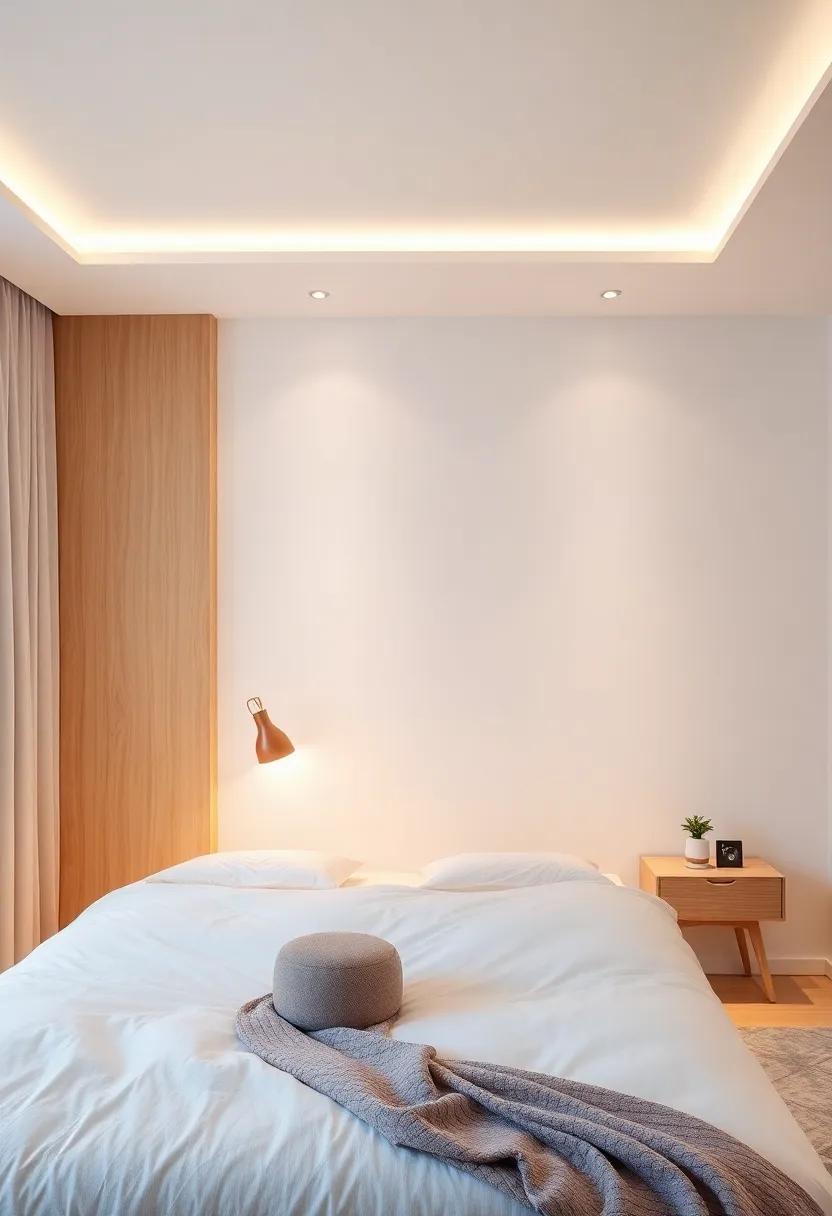
In a shared bedroom, achieving a harmonious lighting scheme can significantly enhance the overall atmosphere while accommodating the diverse needs of each occupant. Begin by incorporating ambient lighting to create a warm and inviting base. This can be achieved thru overhead fixtures such as chandeliers or ceiling-mounted lights, and also wall sconces that emit a soft glow.In addition to ambient light, consider adding task lighting at each bedspace to facilitate late-night reading or studying. Desk lamps or bedside lamps with adjustable brightness levels can ensure that each person has the illumination they need without disturbing others’ rest.
Next, introduce accent lighting to showcase personal touches and create visual interest in the space.Use LED strips along shelves,artwork,or under the bed to highlight specific areas or decor elements. Another attractive option is to incorporate decorative table lamps or illuminated art pieces that reflect the personalities of the occupants. To achieve an optimal balance, consider the following tips when designing your lighting layout:
- Layer your lights: Combine ambient, task, and accent lighting for depth.
- adjust brightness: Opt for dimmable lights to cater to different moods and activities.
- Placement matters: Position lights based on functional zones to enhance usability.
Personalized Spaces: Designing individual Nooks within a Shared Bedroom
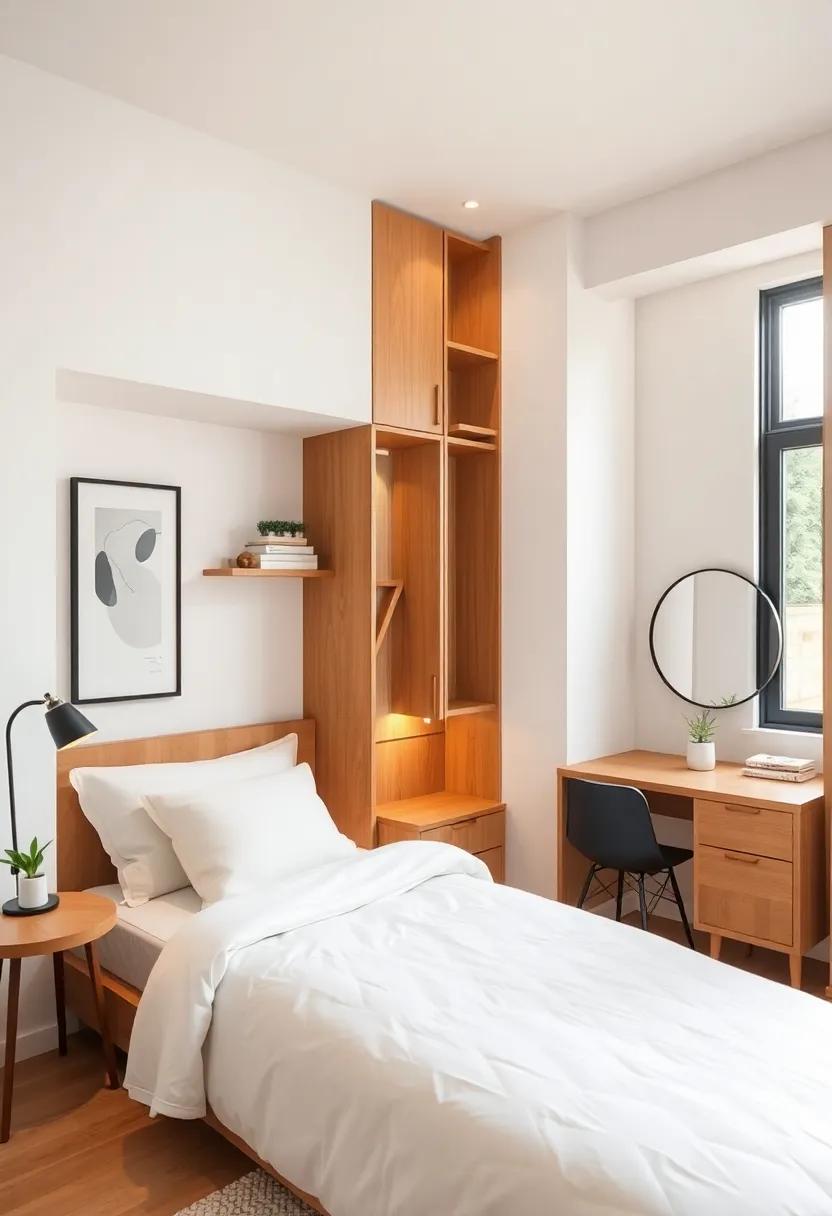
Creating a sense of individuality in a shared bedroom can be an artful endeavor. Consider incorporating distinct color palettes that resonate with each person’s personality. As a notable example, if one roommate prefers soft pastels while the other opts for vibrant hues, use these colors to define their respective areas. Other ideas for a personalized touch include:
- Individual Décor: Encourage each occupant to bring personal items,like art,photos,or plants,to decorate their own nook.
- Unique Textiles: Use different bedspreads or throws that reflect the unique styles of each person.
- Defined Zones: Utilize rugs or furniture placement to clearly delineate personal spaces.
Another effective approach to fostering individuality is through practical furniture arrangements. Consider creating a dual-purpose area that serves both as a personal workspace and as a relaxing nook. Here’s a simple layout to inspire your design:
| Zone | Function | Suggested Furniture |
|---|---|---|
| Work Zone | Study or creative space | Desk, ergonomic chair, shelves |
| Relaxation Corner | Chill space | Bean bag chair, small side table |
| Sleep Zone | rest area | Bed, nightstand, reading lamp |
Through these methods, it’s possible to blend harmony with personalization, ensuring that each roommate feels a sense of ownership and comfort in their shared sanctuary.
Vertical Solutions: Utilizing Wall Space for Storage and Decor
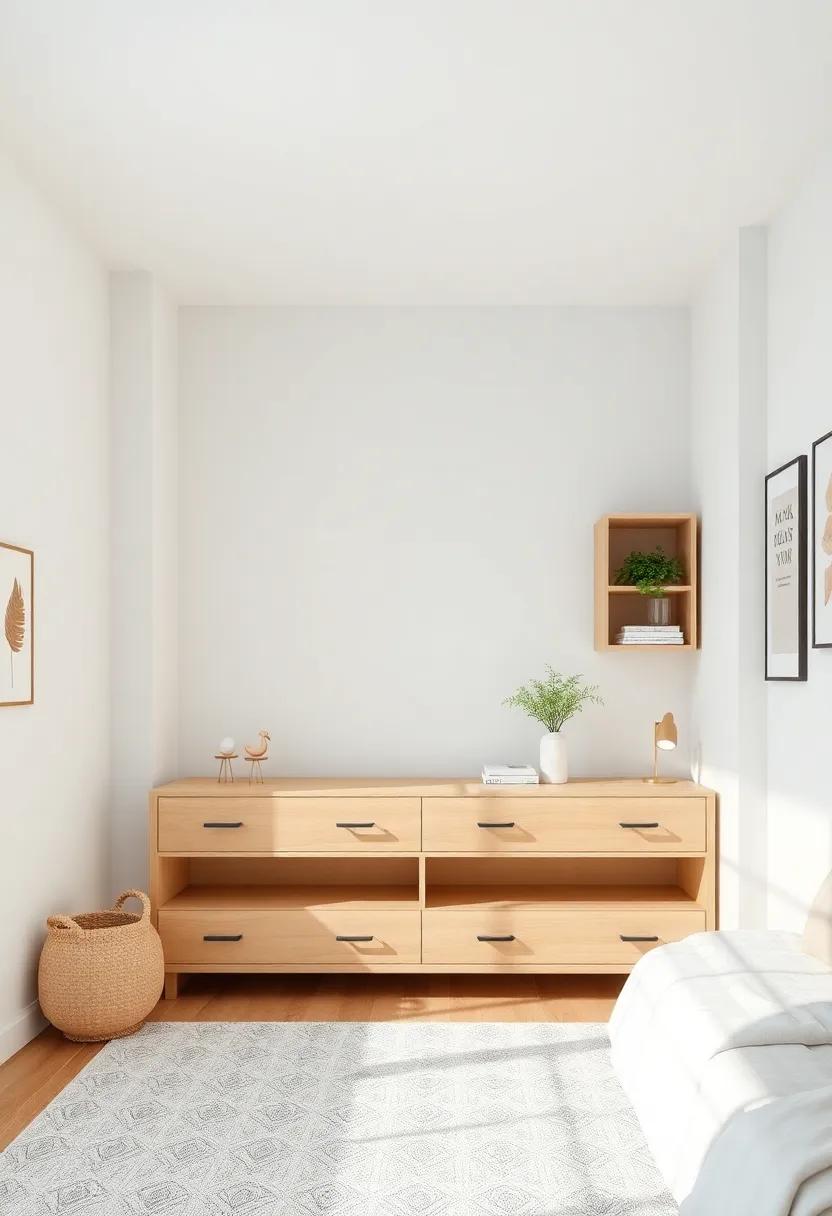
Transforming wall space into a functional and aesthetically pleasing area can significantly enhance a shared bedroom. By using vertical solutions, you can create a harmonious balance between storage and decor. Consider installing floating shelves to display books, plants, or cherished mementos while keeping the floor clear. Utilize pegboards to hang accessories or artwork, allowing for easy customization.You might also explore over-the-door storage solutions, providing additional room for clothes or shoes without sacrificing precious wall space.
To further maximize the utilization of vertical surfaces, think about integrating multifunctional furniture. A bunk bed equipped with built-in shelves not only saves space but also adds an element of fun and creativity to the room. Along with this, using wall-mounted hooks or racks for easy access to bags and hats can keep the space tidy while adding flair.Incorporating greenery with vertical planters can bring a calming vibe and create an inviting atmosphere. By merging decor with functional elements,a shared bedroom can embody both practicality and style.
Creative Partition Ideas: Enhancing Privacy with Innovative Dividers
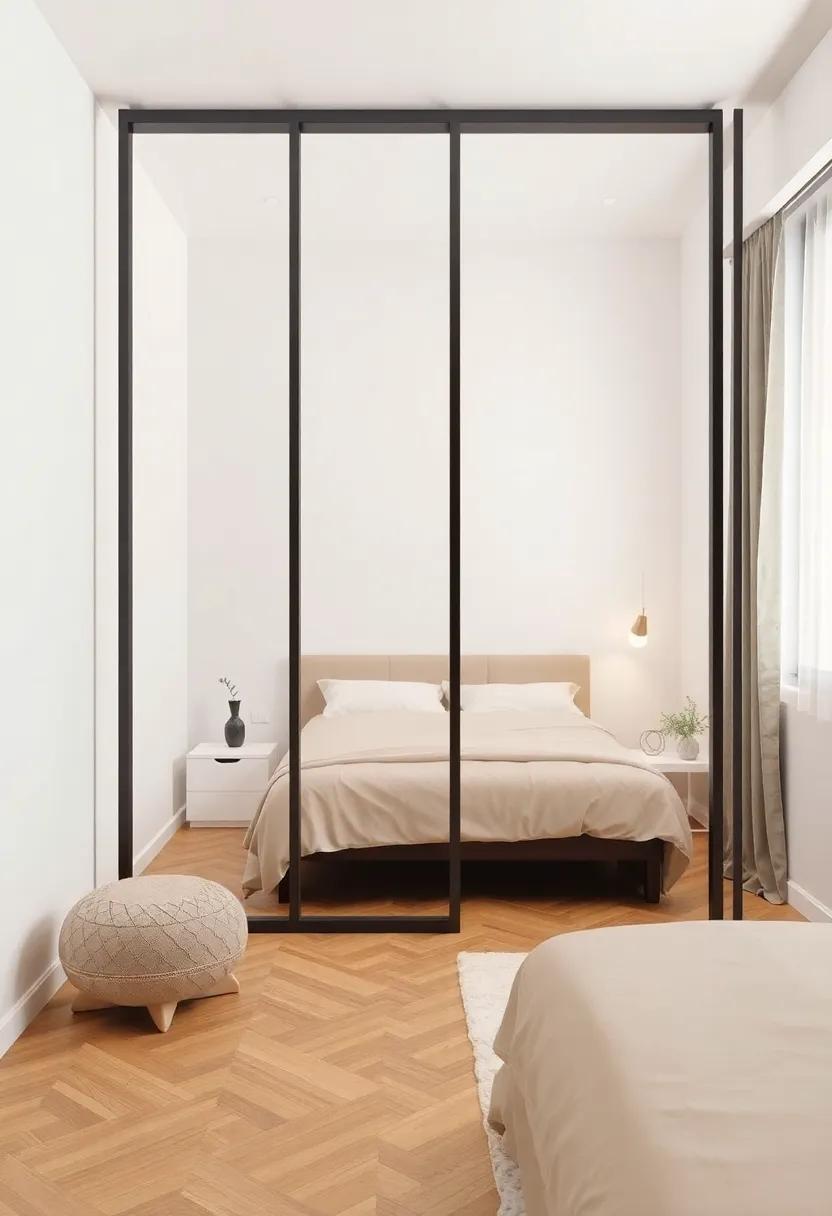
Utilizing innovative dividers in a shared bedroom not only enhances privacy but also promotes a sense of personal space. Consider vertical gardens that serve as living walls—adding greenery while effectively separating areas. These partitions can transform the atmosphere, creating a soothing environment where both occupants can thrive. Moreover,artistic foldable screens can be used to provide flexibility; they’re easily moveable to adapt to various activities,whether it’s study time or relaxation. Other options include bookshelves, which offer storage while creating a division that can be both functional and aesthetically pleasing.
In addition to these ideas, think about using curtains or drapes as an easy, cost-effective solution for privacy. They can be drawn back when not needed, allowing for an open feel, while also enabling a cozy cocoon when it’s time to retreat. For a touch of whimsy, hanging art installations or tapestries can delineate the space with style and character, inviting conversation and creativity. integrating these elements not only divides the room but also brings together personal tastes to foster a harmonious environment shared by two distinct personalities.
Stylish Rugs: Defining Areas with Color and Texture on the Floor
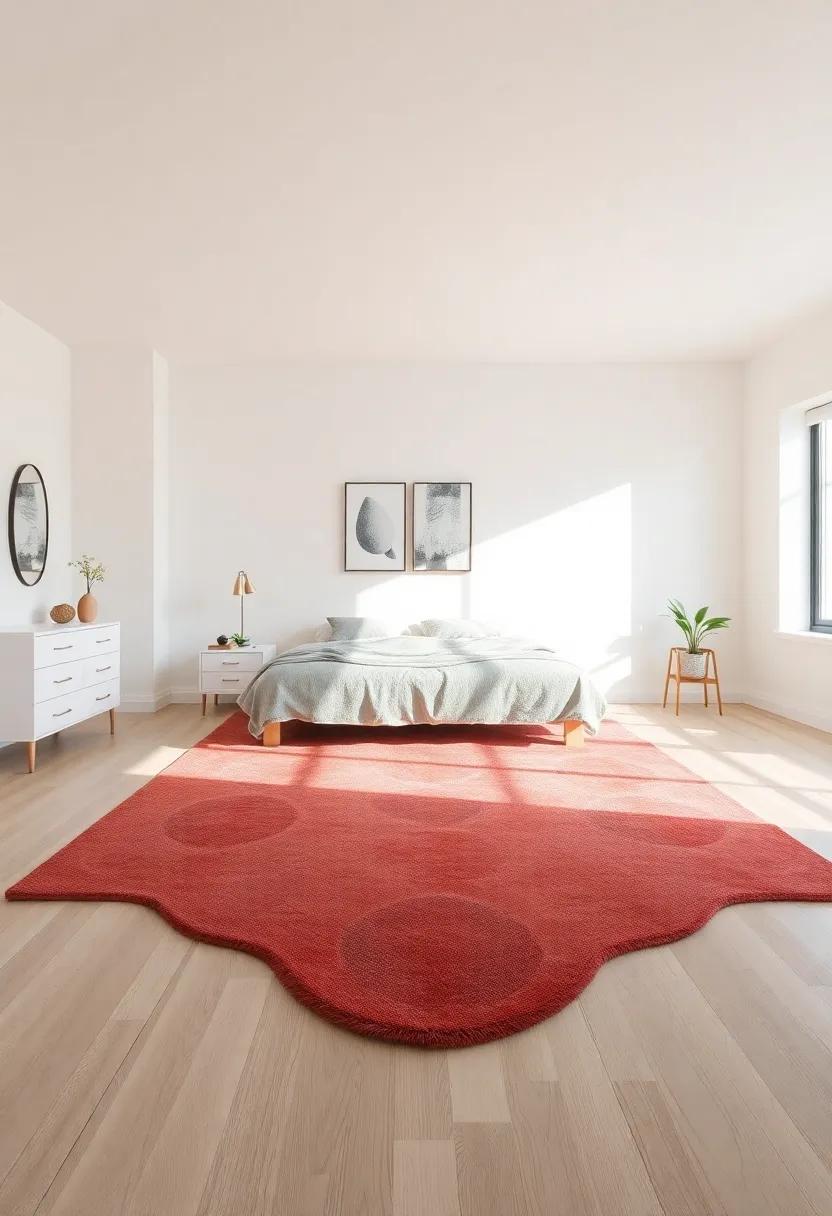
Incorporating stylish rugs into a shared bedroom can dramatically enhance both aesthetics and functionality, acting as a focal point that ties the room together. Whether you prefer bold patterns or subtle textures,the right rug can define personal spaces,creating intimate nooks amidst the shared environment. Consider the following elements when selecting a rug:
- Color Palette: Choose colors that complement existing decor and reflect each person’s personality.
- Material: Opt for durable materials that withstand daily wear while providing comfort underfoot.
- Size Matters: Ensure the rug is appropriately sized to delineate areas without overwhelming the space.
Additionally, layering rugs can add depth and dimension to the room, providing visual interest and a cozy atmosphere. for a harmonious look, try combining different textures—such as a plush shag rug atop a flat-woven piece—to create a rich sensory experience. To illustrate options for versatile rug placement, consider the following simple layout ideas:
| Layout Type | Description |
| Central Focus | Position a large area rug beneath the bed to anchor the room. |
| Separated Zones | Use smaller rugs to define areas like study spots or reading nooks. |
| Layered Look | Combine different rugs for added texture and visual interest. |
bespoke Closets: Clever Storage Solutions to Maximize Wardrobe Space
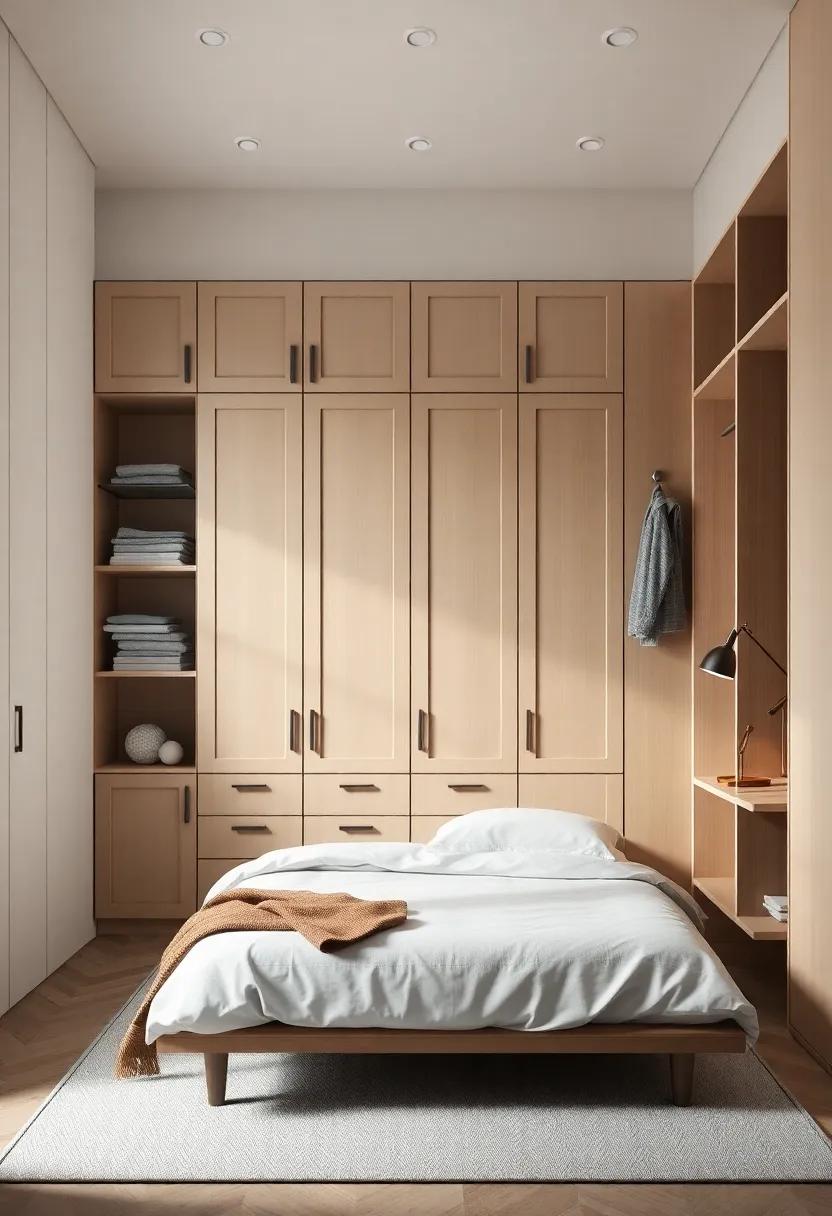
Transform your shared bedroom into a model of efficiency with custom-designed closets that cater to both individual and collective needs. By integrating open shelving,hanging rods,and drawer units,you can create a unified yet personalized storage solution. Consider maximizing vertical space with floor-to-ceiling designs that utilize every inch. the incorporation of clear bins provides visibility while maintaining tidiness, allowing both residents to quickly find their favorite pieces without a rummage.
Another innovative approach is to embrace modular systems that can be adjusted as wardrobe needs evolve. For instance,a multi-functional island can serve as both additional storage and a folding station. Optimize your closet layout by assigning specific zones for each roommate: accessories on one side, seasonal garments on the other. A carefully calibrated balance of shared and private sections fosters harmony, ensuring that both individuals feel their space is respected. Below is a simple layout idea to visualize how to allocate space effectively:
| zone | Description |
|---|---|
| Individual A | Hanging space for dresses and blouses |
| Individual B | Dedicated shelf for shoes and casual wear |
| Shared Space | Storage bins for accessories and unseasonal items |
Artistic Wall Treatments: Adding Character with Paint and Wall Art
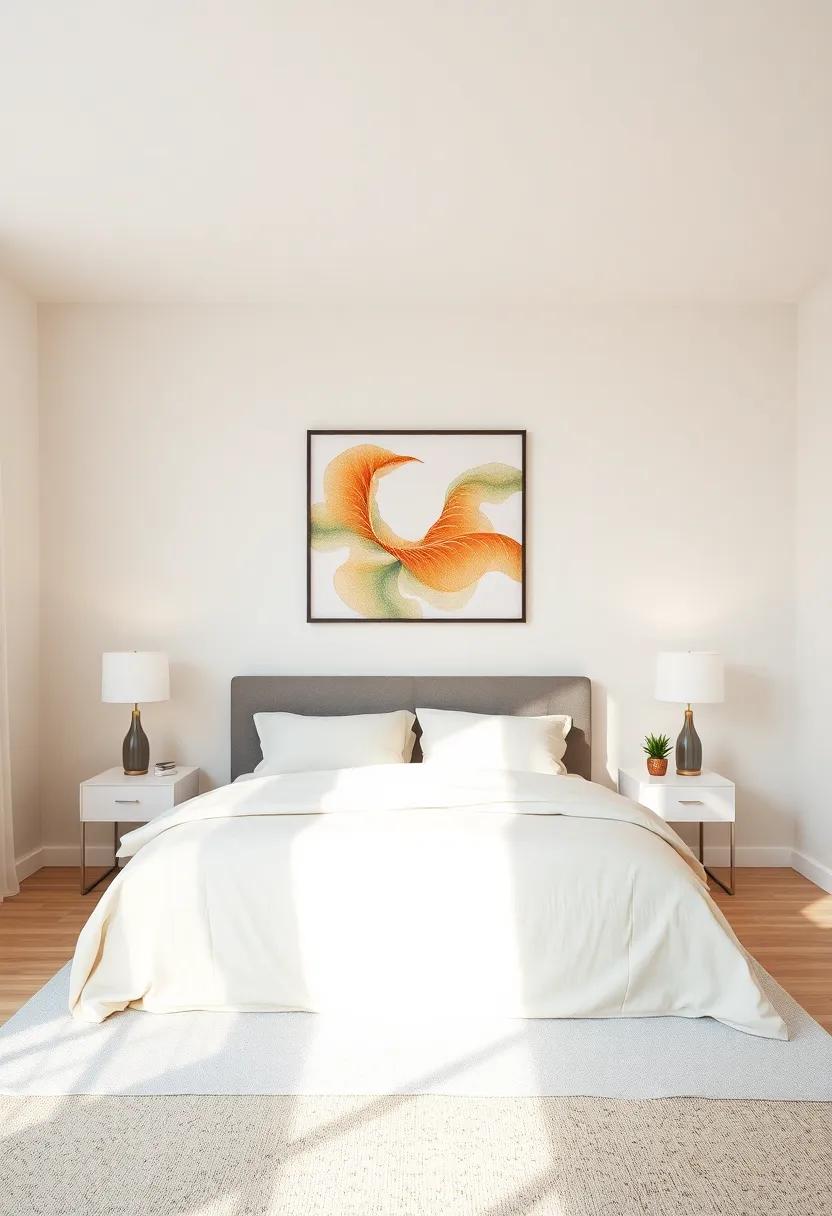
Transforming walls into eye-catching art pieces can breathe life into shared spaces, making them not just functional but also visually striking. Consider implementing a color scheme that aligns with both individuals’ tastes,using paint techniques like ombre or geometric patterns to create a unique ambiance. this method not only sets the mood but also helps in defining different zones within the room. Additionally, reflecting personal interests through wall art can elevate the aesthetic appeal; think framed photos, handmade crafts, or even rotating a gallery wall to keep the space dynamic and engaging.
To bring harmony to the bedroom while incorporating artistic flair, strive for a balance between decorative elements and practical necessities. Create a stunning focal point by pairing a bold accent wall with minimalist furnishings to avoid overwhelming the senses. Utilize decorative displays like shelves or floating frames to showcase artwork while ensuring they don’t intrude on the floor space. A well-organized approach to layering textures—such as textured wallpaper coupled with soft textiles—can enhance the overall design, offering both coziness and sophistication that harmonizes differing styles in the shared bedroom.
| Paint Techniques | Wall Art Ideas |
|---|---|
| Ombre | Framed Photos |
| Geometric Patterns | Handmade Crafts |
| Stripes | Gallery Walls |
| Sponging | Art Prints |
Reflective Surfaces: Using Mirrors to Create an Illusion of Space
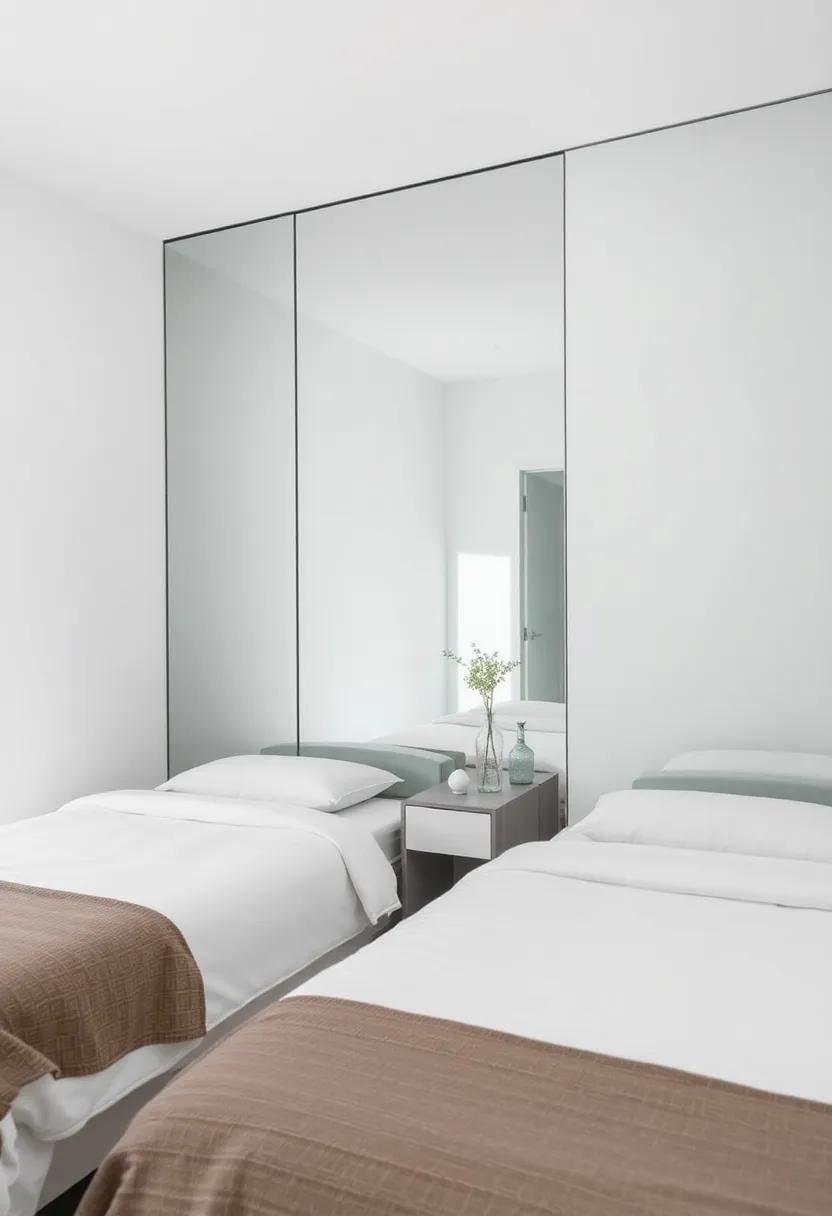
Incorporating mirrors into a shared bedroom can work wonders for enhancing the perceived space and achieving a cohesive feel. By strategically placing mirrors on the walls,you can effectively double the light and visually expand the area. Here are some innovative ways to utilize reflective surfaces:
- Wall-Mounted Mirrors: Position large, framed mirrors across from windows to reflect natural light, making the room feel more open and airy.
- Mirrored Furniture: Opt for furniture with mirrored surfaces, such as dressers or bedside tables, to create a touch of glamour while maintaining a sense of spaciousness.
- Gallery of Reflection: Create a gallery wall with various sizes of mirrors to add dimension and foster a playful aesthetic.
To maximize harmony in a shared space, the color and design of mirrors should complement the overall decor. Opt for elegant, minimalist frames that blend seamlessly with the surrounding elements.Consider the following aspects when selecting mirrors:
| Type of Mirror | Best Use | design Tip |
|---|---|---|
| Full-Length Mirror | Visual expansion and functionality | Lean against a wall for a relaxed look |
| Framed Wall Mirror | Decorative focal point | Choose a frame that matches your decor style |
| accent Mirrors | Adding character | Mix styles for an eclectic feel |
Nature-Inspired Elements: Bringing the Outdoors In for Serenity
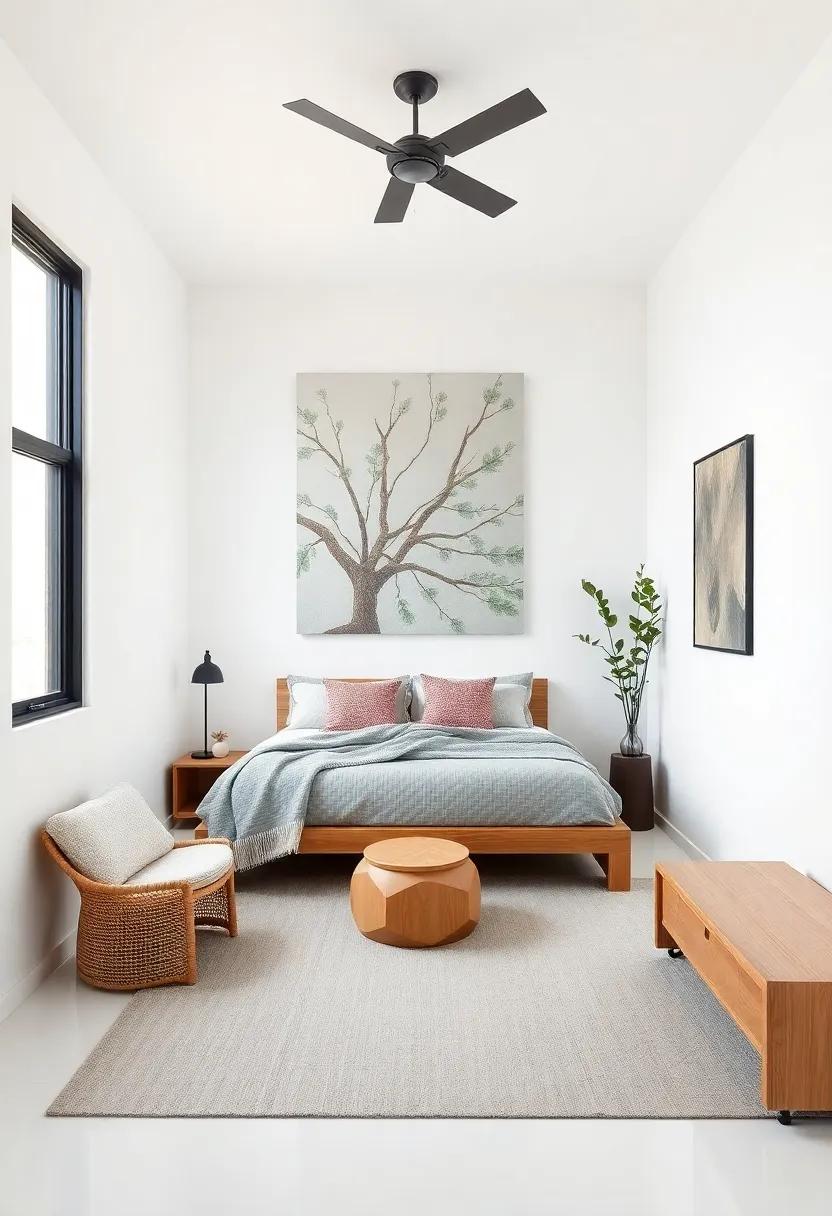
Transforming your shared bedroom into a serene retreat can be easily achieved by incorporating elements inspired by nature. Start by choosing a color palette that reflects the calming hues found outdoors. Shades of green, soft blues, and earthy browns can foster a tranquil atmosphere. Consider adding textured materials like jute rugs, bamboo accents, and linen curtains to enhance the organic feel.Plants, such as succulents or ferns, can also serve as perfect companions—bringing life and a breath of fresh air into the space. Here are a few ideas to integrate:
- Potted plants on shelves or windowsills
- Nature-themed artwork to evoke landscapes
- Wooden furniture that complements the natural vibe
Additionally, the use of natural light is crucial in creating a calm ambiance. Arrange your furniture to maximize sunlight exposure, making the room feel more open and inviting. You can achieve harmony through thoughtful placement, ensuring that both residents have defined personal zones while remaining connected. Adding soft lighting, such as fairy lights or lamps with warm tones, can mimic the glow of sunrise or sunset, perfect for winding down at the end of the day. Consider these spatial-enhancing features:
| Element | Benefit |
|---|---|
| Mirrors | Expand visual space and reflect light |
| Multi-functional furniture | maximize utility while minimizing clutter |
Flexible Layouts: Adapting Designs to Changing Needs and Preferences
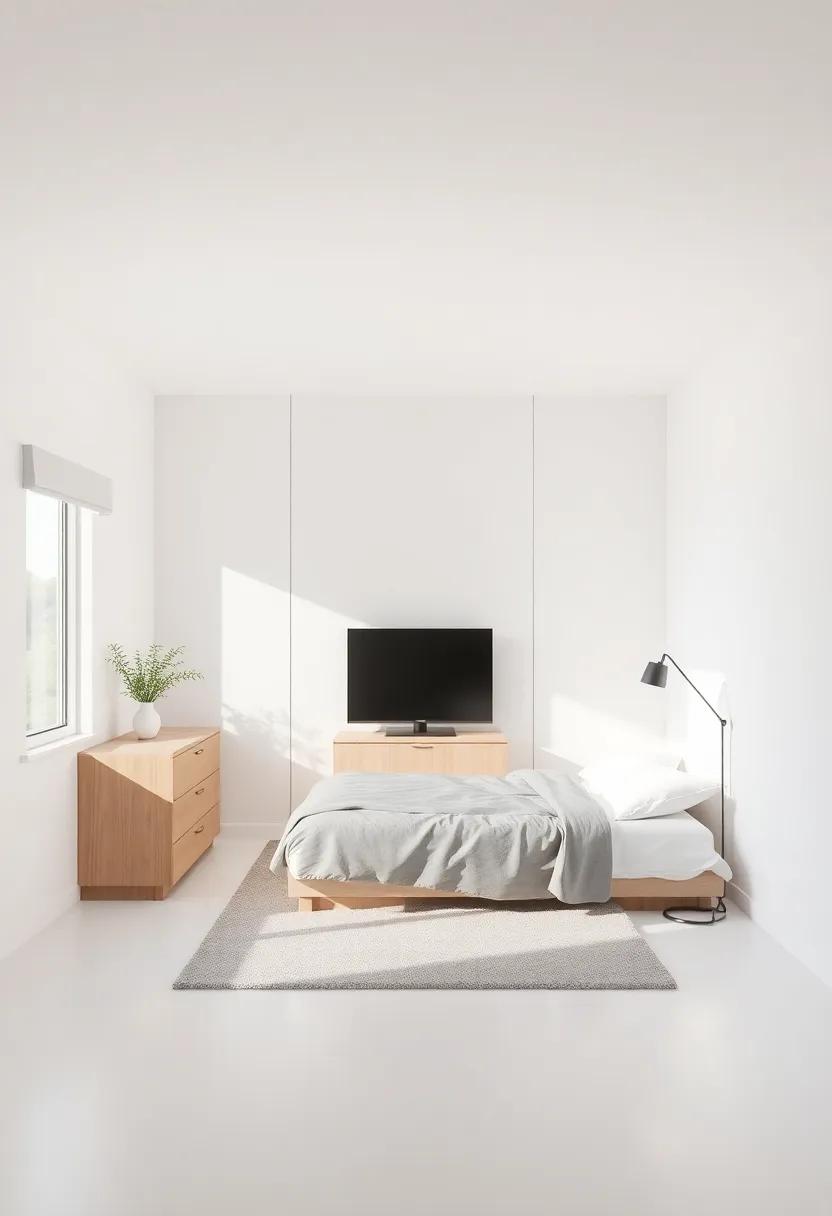
Creating a harmonious shared bedroom requires a flexible layout that can morph according to the inhabitants’ individual preferences and changing dynamics. Embracing versatility means choosing elements that can easily adapt and switch places, promoting a sense of ownership for each occupant. Key components to consider for flexible designs include:
- Modular Furniture: Pieces that can be rearranged to fit different setups or functions.
- Open Shelving: Provides a space for both personal items and shared decorations.
- Sliding Dividers: Allows for privacy when needed without permanently segregating space.
Additionally,color schemes and lighting can significantly influence the feel of the room. Opting for a neutral base palette allows for personal touches that can shift with style preferences or seasons. Incorporating layered lighting options, such as bedside lamps and overhead fixtures, can also cater to varying moods and activities. Here’s a concise table highlighting different layout options to consider:
| Layout Option | Pros | Cons |
|---|---|---|
| Split Layout | Privacy, equal space distribution | Can feel disjointed |
| Multi-Purpose Furniture | Maximizes space, functionality | Can be costly |
| Lofted Beds | Increases floor space | Accessibility challenges |
Layering Fabrics: Textiles that Enhance Comfort and Foster Harmony
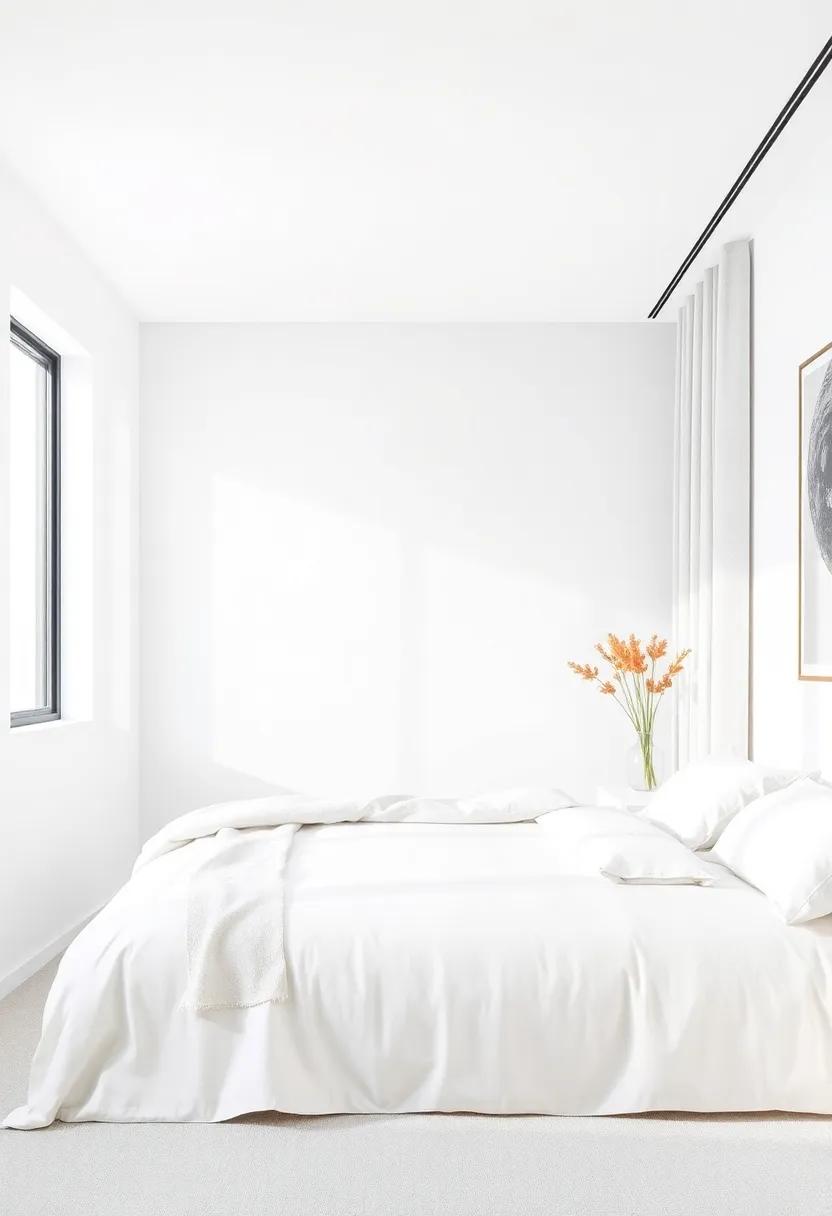
in the quest for a harmonious shared living space, layering fabrics plays a pivotal role in enhancing both comfort and aesthetics.Combining different textiles not only elevates the visual appeal of the bedroom but also creates a cozy atmosphere that invites relaxation. Consider integrating various elements such as:
- Soft throws: Perfect for adding warmth and a touch of color.
- Layered bedding: Mix and match sheets, duvets, and quilts for depth.
- textured cushions: throw pillows in diverse fabrics offer tactile comfort.
This thoughtful arrangement facilitates a blend of personal styles, encouraging each occupant to express their individuality while maintaining a cohesive look.
Moreover, strategic layering can promote a sense of harmony through careful color selection and fabric compatibility. Opting for a palette that complements the overall theme of the bedroom fosters unity, while different textures can be used to delineate personal spaces within shared areas. Consider these combinations for your setup:
| Fabric Type | Feature |
|---|---|
| Cotton | Breathable and easy to maintain |
| Linen | Natural texture and lightweight |
| Fleece | Cozy and warm for colder months |
By thoughtfully layering these elements, you can transform the shared bedroom into a sanctuary of comfort, promoting restful nights and peaceful harmony.
Playful Accents: Incorporating Fun Decorative Elements to Brighten the Room

Incorporating playful accents into a shared bedroom can transform the atmosphere from ordinary to remarkable. Think beyond traditional decor and consider adding elements that spark joy and conversation. Colorful throw pillows with whimsical patterns, vibrant wall art that reflects each occupant’s personality, and quirky decorative items such as animal figurines or funky lamps can infuse energy into the space. Each element should serve as a visual delight while being functional, ensuring that the room feels both lively and cohesive.
Using somthing as simple as string lights can introduce a sense of warmth and cheerfulness, perfect for late-night discussions or bedtime stories. Additionally, a small gallery wall featuring both personal photos and playful prints can cultivate a sense of collaboration and connection between roommates. Adding a rug with a fun design not only anchors the room but also invites comfort. Consider these ideas when selecting decorative accents to create a shared space filled with personality, harmony, and a bit of light-heartedness.
Embracing Minimalism: How Simplicity Can Cultivate Peaceful Living Spaces
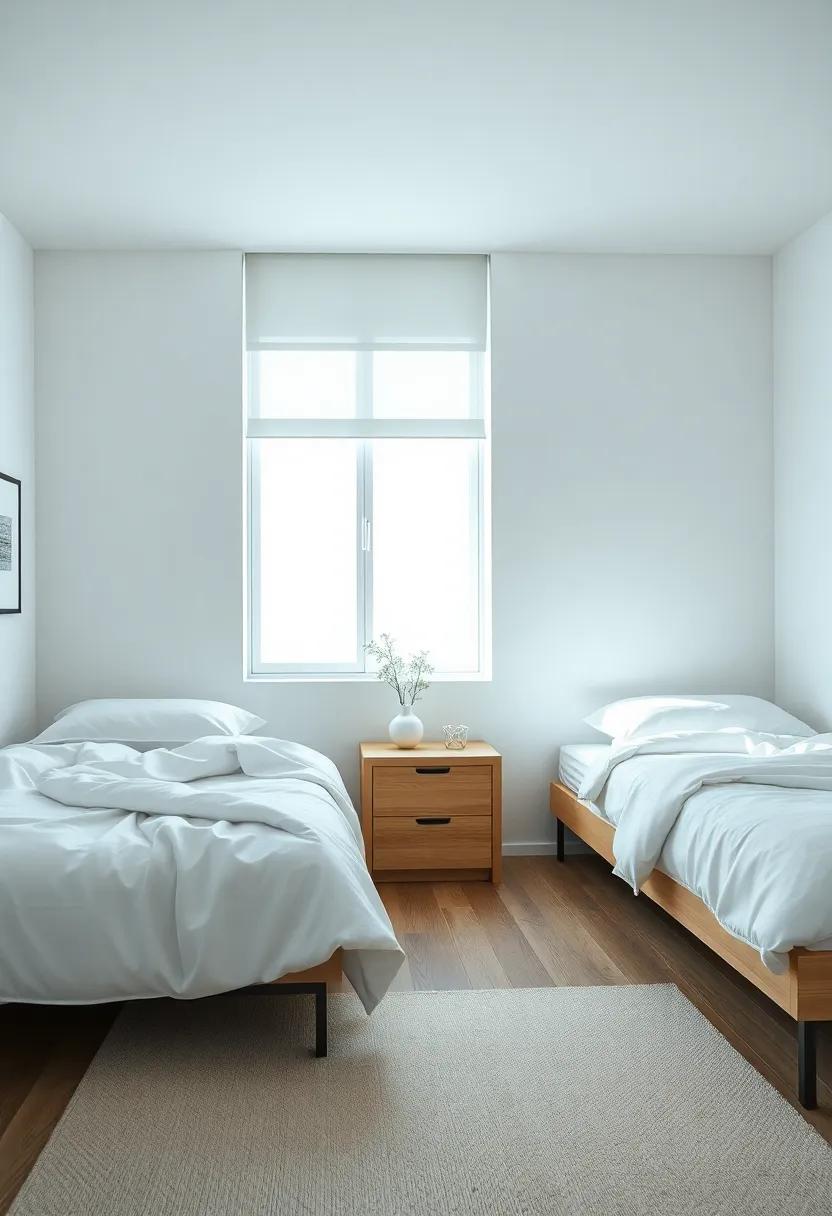
When it comes to creating a serene atmosphere in shared bedrooms, embracing simplicity is key. This can be achieved through strategic association and intentional design choices. Start by decluttering the space to make room for essential items only. Consider incorporating multifunctional furniture, such as lofted beds or storage ottomans, which not only save space but also enhance functionality. By opting for a neutral color palette, you can create a visually calming environment that promotes relaxation and harmony. Here are a few tips to master this approach:
- Choose a limited color scheme, focusing on soft earth tones.
- Utilize vertical storage solutions to free up floor space.
- Incorporate light-filtering curtains to let natural light in.
- Arrange furniture to allow smooth traffic flow and accessibility.
A creative layout can contribute significantly to achieving a peaceful living space.It’s essential to consider personal preferences and designate specific zones to cater to diverse needs. Optimize the room by establishing individual areas for study,relaxation,and sleeping without sacrificing style. Utilize dividers or open shelving for separation while maintaining an airy feel. here’s a simple table illustrating potential zone setups:
| Zone | Description |
|---|---|
| Sleep Zone | Cozy bed arrangement with personal touches. |
| Study Zone | A decluttered desk area with adequate lighting. |
| Relaxation zone | Comfortable seating with books and decorative items. |
Symmetry and Balance: Creating Visual Harmony Through Design Choices
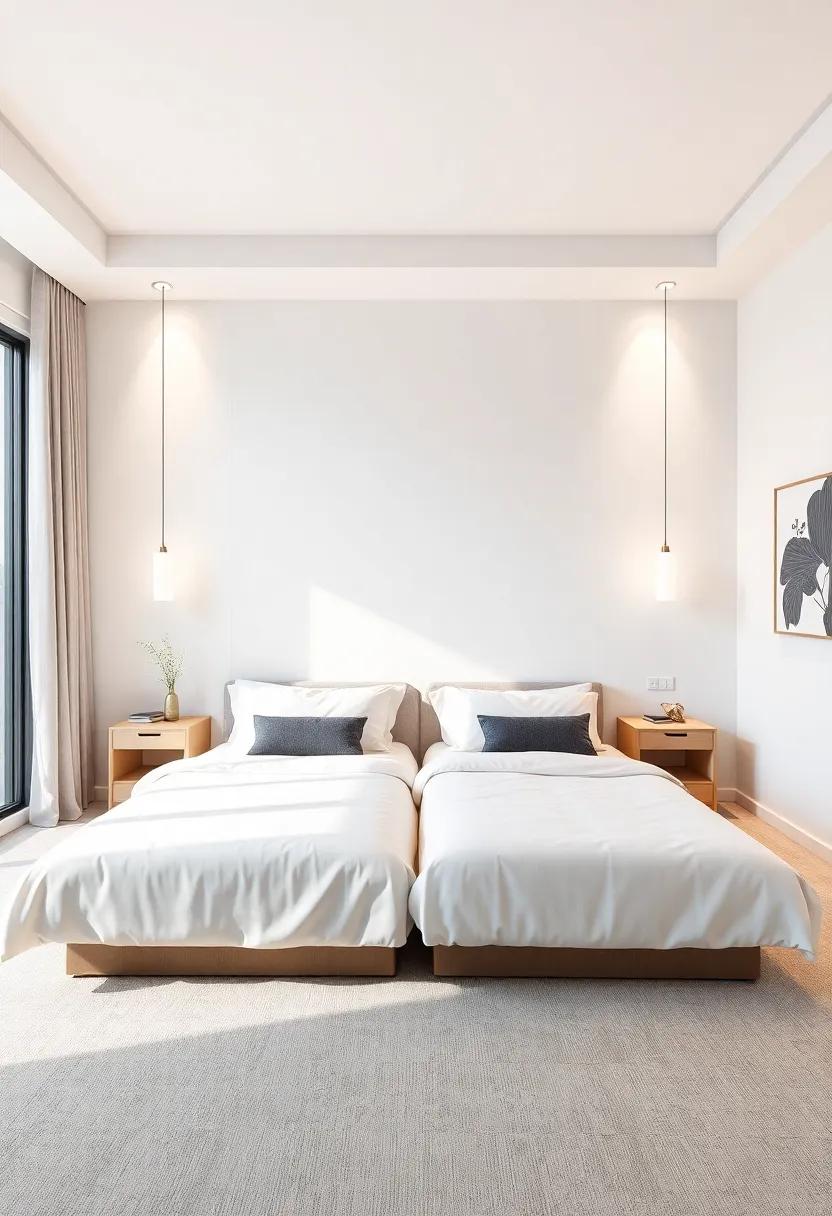
In any shared bedroom, the key to achieving visual harmony lies in the meticulous arrangement of furniture and decor. Symmetry can be established by mirroring furniture placements,such as placing two identical beds on opposite walls or using matching nightstands flanking a central piece of art. This approach not only maintains a balanced aesthetic but also creates a restful ambiance, allowing each inhabitant feel like they have their own designated space. Consider the following design choices to enhance symmetry:
- Matching Textiles: Use similar bedding and curtains to unify the space.
- Coordinated Artwork: Hang two pieces of art at equal heights on either side of a focal point.
- Dual Lighting: Install identical bedside lamps to illuminate each side of the room.
Balance can also be achieved through color schemes and accessory selections. Employ a color palette that features complementary hues to draw the eye across the whole room. Imagine two distinct areas within the bedroom, each reflecting personal styles yet interconnected through a cohesive design. Elements such as throw pillows, area rugs, and decorative items can bridge styles while keeping the overall look unified. here’s a quick reference for colour combinations that evoke harmony:
| Color Pair | Vibe |
|---|---|
| Soft Blue & White | Calm and Tranquil |
| Earthy Greens & Browns | Natural and Grounded |
| Warm grays & Creams | cozy and Inviting |
Thoughtful Accessories: Selecting Pieces that Encourage Togetherness
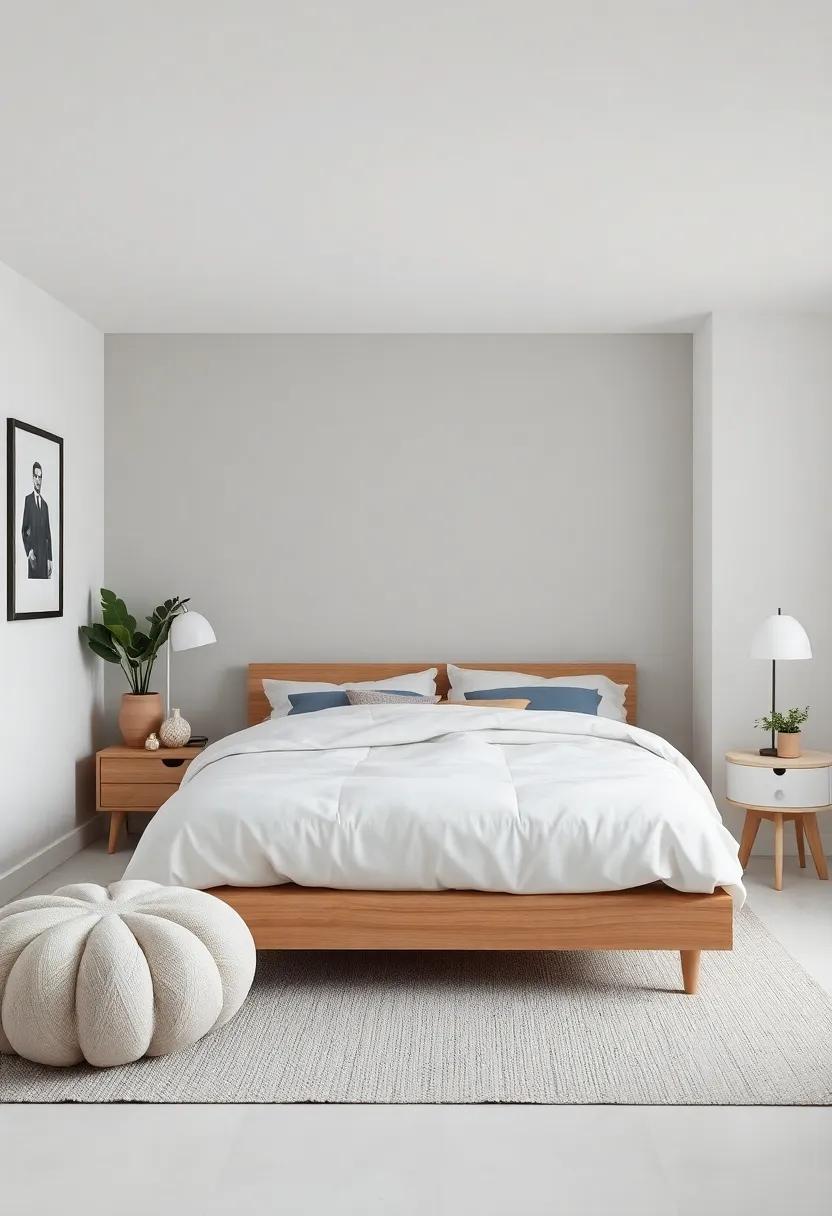
When curating accessories for a shared bedroom, think about pieces that not only enhance the space but also foster connections. Cozy throws and cushions can create inviting nooks for conversation, while wall art might reflect the shared interests of both occupants. Consider adding a shared corkboard or pinboard for reminders,photos,and inspirations. This interactive space fetches the feel of a communal memory lane,promoting collaboration and engagement over time.
Another delightful way to incorporate togetherness is through functional accessories that double as decorative elements. Items such as stylish storage baskets or multi-functional ottomans can definitely help keep clutter at bay while adding personality to the room.Here are some thoughtful accessories to include:
- Photo Display String Lights: Create a warm ambiance with personal snapshots.
- Shared Bookshelf: Curate a collection of favorites to encourage literary discussions.
- Joint Journals: Dedicate a space for both to express thoughts or jot down dreams.
Seasonal Decor: Updating the Aesthetic with the Changing Seasons
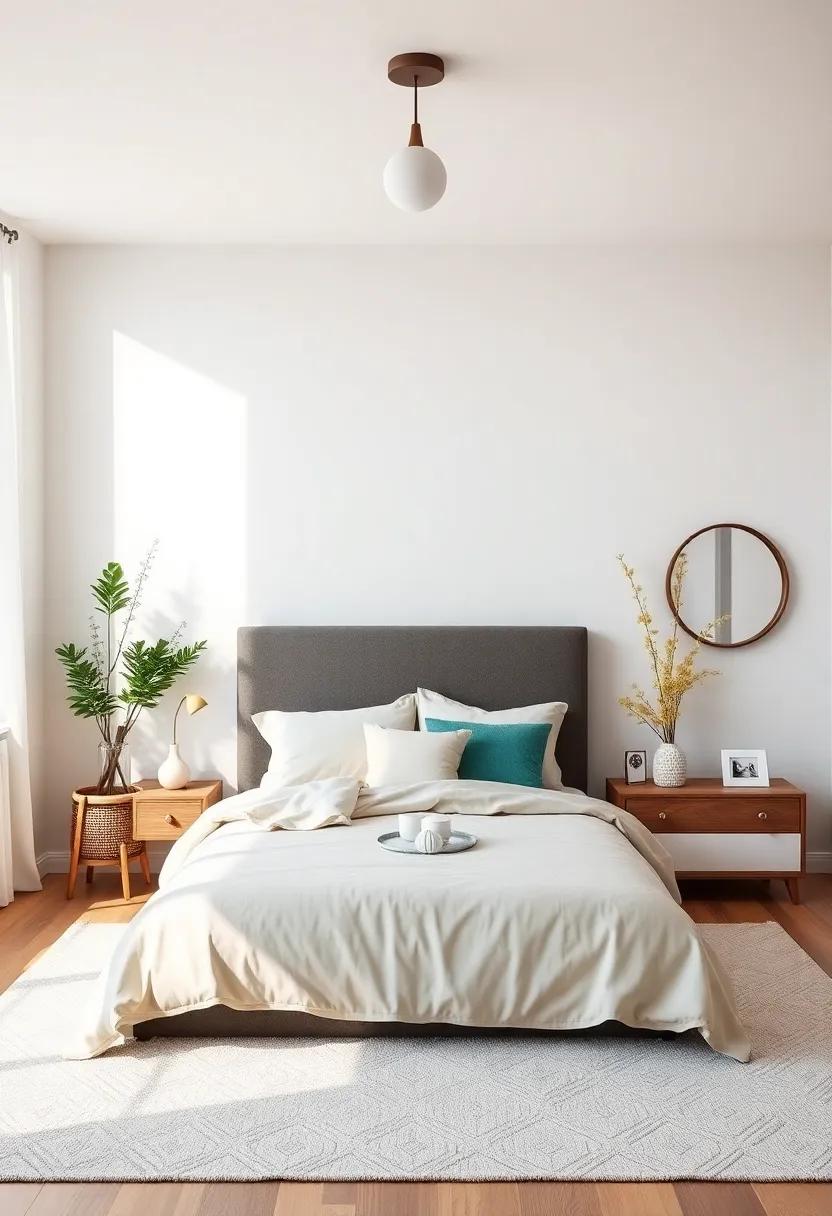
As the seasons shift,so too can the atmosphere of your shared bedroom. Embrace the beauty of change by incorporating seasonal decor that breathes fresh life into your space. For spring, consider pastel-colored cushions and floral accents that infuse vitality and warmth. In contrast, summer can usher in vibrant hues with lightweight throws and airy textiles, creating an inviting retreat for relaxation. Autumn can be celebrated with rustic elements like pumpkin-inspired decor and warm, earthy tones, fostering a cozy ambiance, while winter invites a touch of elegance with soft, layered textures and twinkling fairy lights.
Craft a harmonious and dynamic environment by rotating key decor items influenced by the season. Here are some effortless ideas to refresh your shared space:
- Change bed linens to reflect seasonal colors.
- Add or swap out wall art for seasonal themes.
- Incorporate appropriate scents through candles or diffusers.
- Update throw pillows with seasonal patterns or textures.
- Utilize plants or seasonal flowers to enhance liveliness.
| Season | Decor Element | Vibe |
|---|---|---|
| Spring | Floral accents | Fresh & Shining |
| Summer | Vibrant textiles | Light & Airy |
| Autumn | Rustic decor | Warm & Cozy |
| Winter | Soft textures | Elegant & Inviting |
Functional Decor: Combining Beauty with Practicality in Shared Spaces
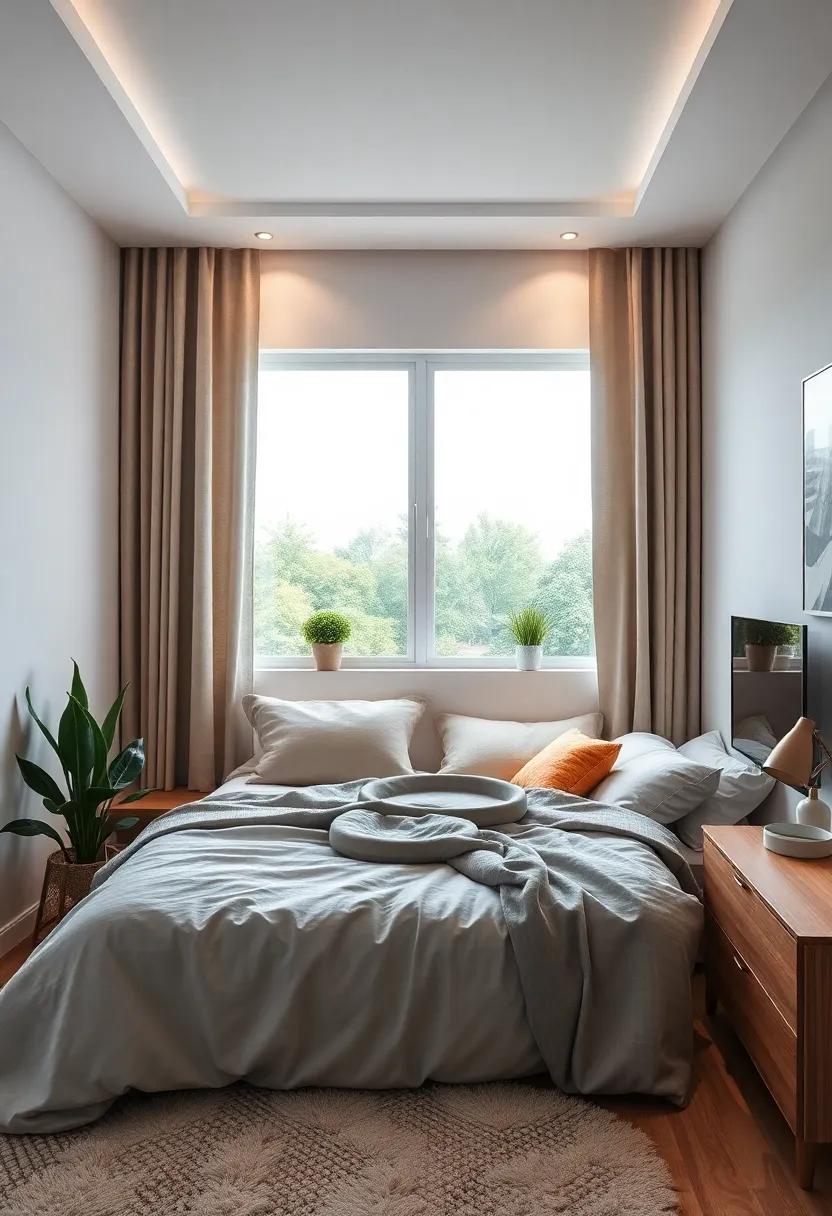
In a shared bedroom,the challenge lies in crafting an inviting atmosphere while ensuring functionality. By selecting decor that pulls double duty, you can create a space that is both stunning and practical. Consider incorporating multi-functional furniture that not only serves as seating or sleeping areas but also provides essential storage solutions. Utilizing items like ottomans that open to reveal hidden compartments or beds with built-in drawers can significantly reduce clutter while maintaining aesthetic appeal.
To further enhance the balance of elegance and utility, layers of textiles can contribute both warmth and style. Mix and match bed linens with decorative throw pillows that reflect each occupant’s personality while ensuring comfort.Additionally, implementing dividers or curtains can provide a sense of privacy without isolating the shared space.Incorporate greenery through easy-care plants that improve air quality while adding color and vibrancy. These small yet impactful choices help integrate personal touches and promote harmony, transforming your shared bedroom into a serene haven.
| Furniture Type | Functionality | Design Appeal |
|---|---|---|
| Loft Bed | Free up floor space for a desk or seating | Modern and stylish |
| Storage Bench | Sits and stores items like shoes or blankets | Chic addition to room decor |
| Folding Desk | Provides workspace when needed,folds away otherwise | minimalist design |
Emotional Connections: Infusing Personal Touches for a Welcoming Atmosphere

Creating a shared bedroom that feels like home demands more than just efficient spatial organization; it’s about cultivating emotional connections. Personal touches play a pivotal role in establishing a welcoming atmosphere. Consider incorporating elements that reflect the personalities and memories of both individuals. Here are a few ideas to weave personal stories into the space:
- Gallery Wall: Frame artwork, photos, and notes that carry significance to both roommates.
- Joint Projects: Engage in a DIY project, like painting a canvas or creating a decorative piece together.
- Memory Box: Place a beautifully designed box to store shared keepsakes from adventures and milestones.
In addition to personal decor, the arrangement of furniture can enhance emotional comfort. A cozy nook with soft lighting and cushions can serve as a retreat for quiet moments, encouraging relaxation. By incorporating elements such as:
| Item | Purpose |
|---|---|
| Scented Candles | To evoke warmth and peace. |
| Shared Bookshelf | To foster connection through literature. |
| Plants | To bring life and a calming presence. |
Balancing personal touches with shared elements creates a harmonious vibe that nurtures connection and respect, making the bedroom a sanctuary for both individuals.
Charming Ceiling Treatments: Elevating the Room’s Style from Above
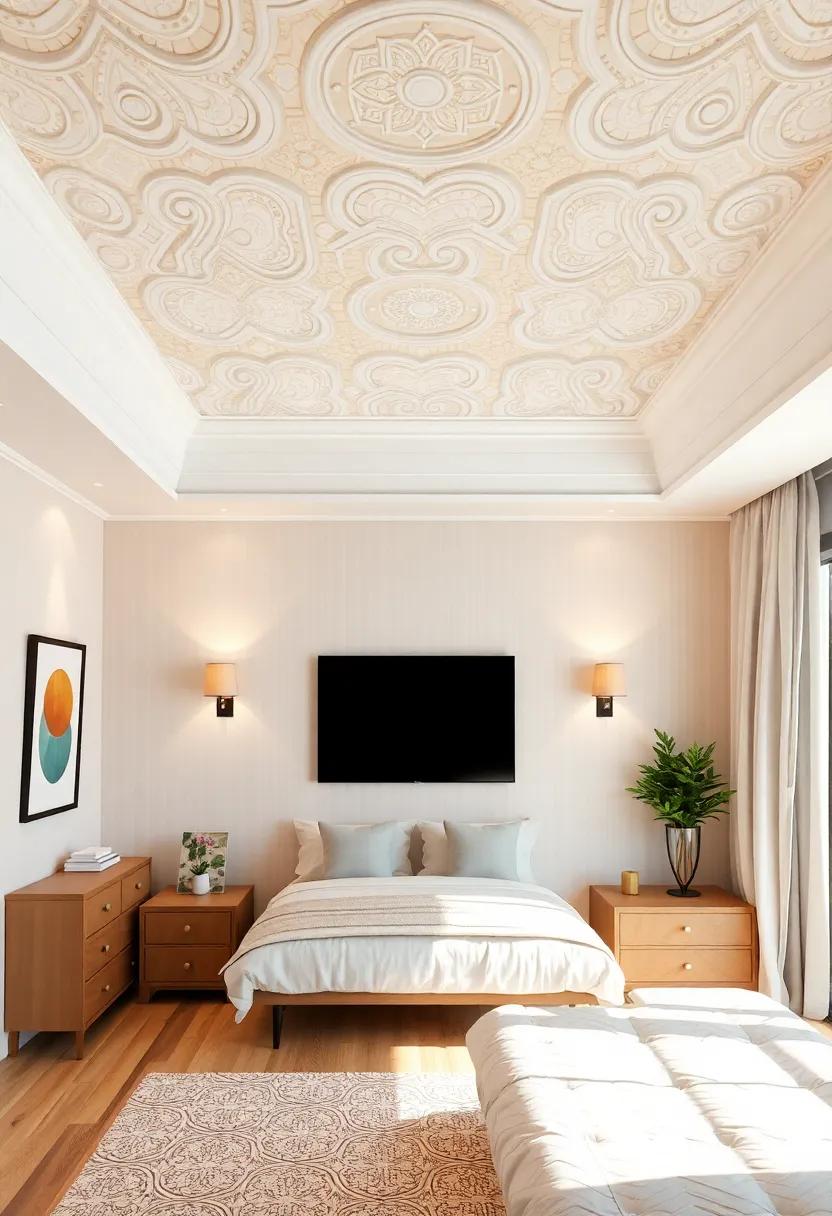
transforming a shared bedroom’s ambiance can be as simple as turning your gaze upward. The ceiling often goes unnoticed, yet it holds the potential to introduce texture and narrative to the space. Consider implementing these captivating treatments for an inviting atmosphere:
- painted Ceilings: Adding a soft hue or a bold color can create an intimate canopy effect.
- Wood Beams: exposed beams can add rustic charm and visual interest.
- Wallpaper Accents: Use luminous patterns to draw the eye and complement the overall design.
- Lighting fixtures: Hang statement chandeliers or pendant lights to enhance the ceiling’s presence.
Textures also play a key role in ceiling design. More than just a flat surface, a ceiling can become a dynamic element of the room. From coffered styles to painted murals, the choices can reflect personal style while fostering a harmonious environment. Here are a few ideas:
| Texture Option | Visual Effect |
|---|---|
| Coffered Panels | Add depth and sophistication. |
| Gypsum Molding | Create elegance with a classic finish. |
| Fabric Draping | Introduce softness and warmth. |
| Stenciled designs | Provide personalized flair and creativity. |
Sound-absorbing Elements: creating Serenity through Acoustic Design
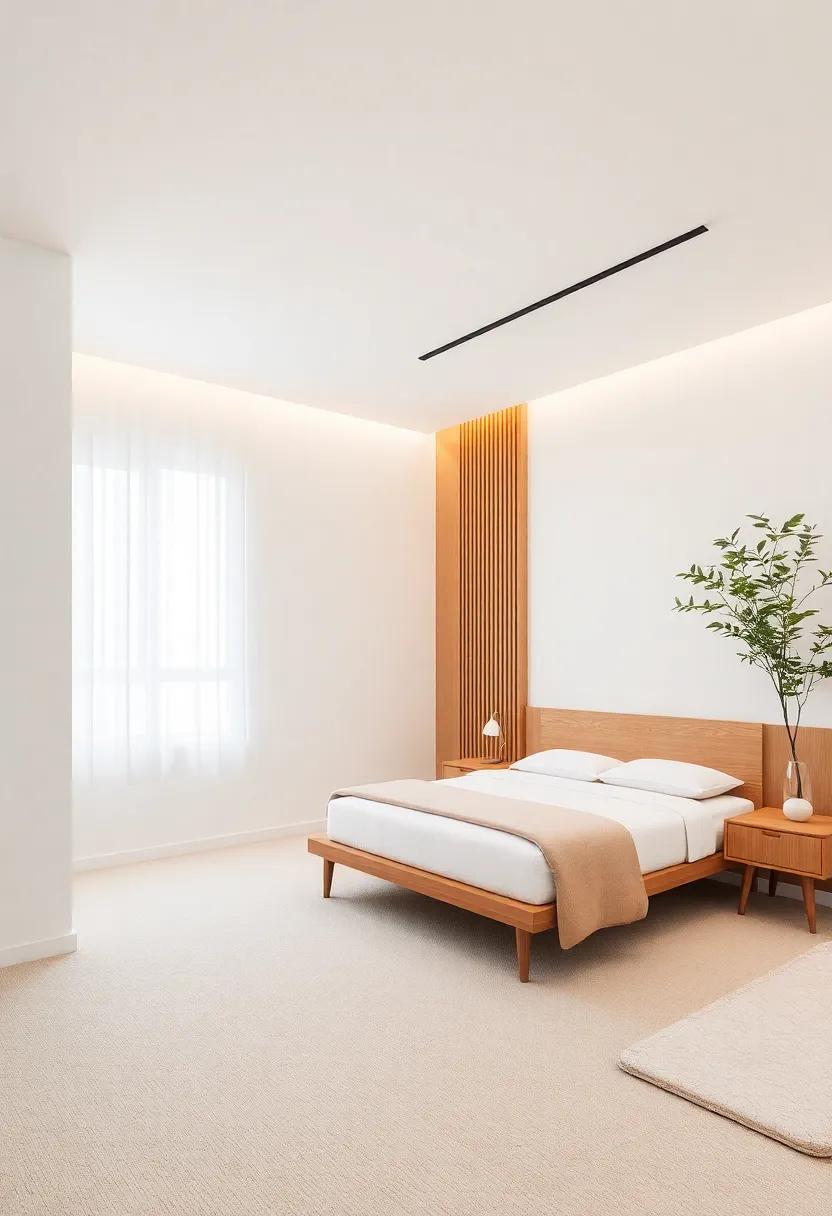
In a shared bedroom, finding a way to foster tranquility is essential. Incorporating sound-absorbing elements can significantly enhance the atmosphere, creating a peaceful retreat amidst the hustle of daily life. Consider adding acoustic panels or soft textiles that not only absorb noise but also contribute stunning visual elements to the decor. Options to explore include:
- Wall Panels: Fabric-covered, foam, or wooden acoustic panels strategically placed can reduce echo and soften the room’s acoustics.
- Rugs and Carpets: Thick rugs can minimize sound bounce and provide comfort underfoot, anchoring the decor.
- Draperies: Heavy curtains not only block light but also serve as a sound barrier, perfect for shared spaces.
- Bookshelves: Full bookshelves can act as natural sound barriers while promoting an organized look.
To effectively blend these elements into your design, you can create designated zones using furniture arrangements that prioritize comfort and reduce noise.For instance, placing beds in corners can create a cozy, enclosed feel, while utilizing soft lighting options and natural materials helps enhance acoustic comfort. Here’s a simple table of furniture ideas that improve both aesthetics and sound management:
| Furniture | Benefits |
|---|---|
| Soft Headboards | Reduce noise from walls |
| Accent Chairs | Create separate seating areas |
| Storage Benches | Minimize clutter and sound |
| Room Dividers | Add privacy and absorb sound |
Individual Identity: Merging Personal Styles into a Cohesive Look
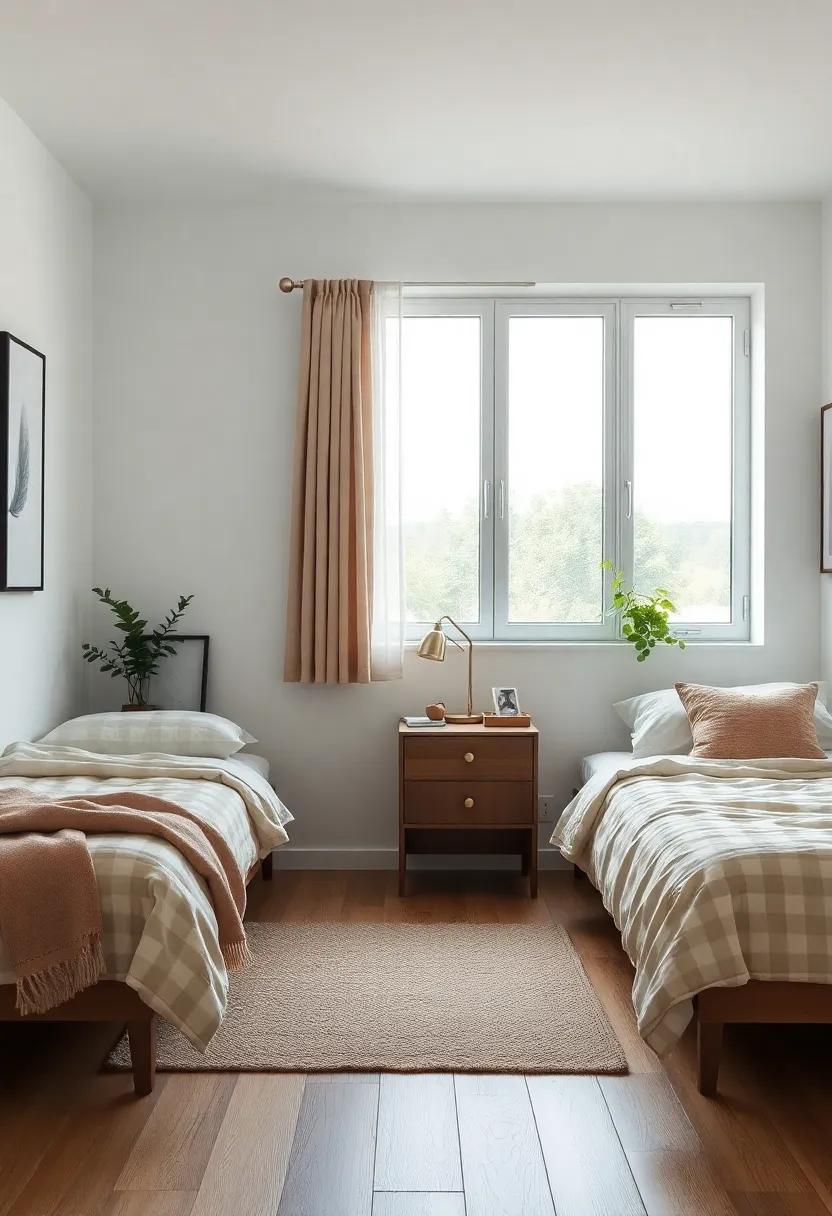
Creating a harmonious shared bedroom requires an intentional blending of personal styles to foster a unique space that reflects both personalities. Start by identifying key elements from each individual’s aesthetic, such as color palettes, patterns, and textures. This will enable you to establish a balanced foundation where both styles can thrive. Consider integrating statement pieces that resonate with each person; such as, one might prefer minimalist decor while the other leans toward eclectic items. By finding common ground, you can create a space that feels cohesive yet personal.
To further enhance the room’s character, utilize design strategies that facilitate unity. Designate specific zones for each person, using furniture layouts that allow for personal touches while maintaining overall harmony.here are some effective approaches to achieve this balance:
- Color Coordination: Stick to a unified color scheme with complementary accents.
- Shared accessories: Use common decor items, such as rugs or artwork, to tie the spaces together.
- multi-Functional Furniture: Opt for pieces that serve dual purposes, accommodating both styles while saving space.
To visualize your design and help pinpoint discrepancies, consider creating a simple comparison table. This can serve as a reference for each person’s preferences and help integrate their styles seamlessly:
| Element | Person A’s style | Person B’s Style |
|---|---|---|
| Color Palette | Cool Blues | Warm Neutrals |
| Textiles | Minimalist Patterns | Bold Prints |
| Furniture | Scandinavian Design | Vintage Finds |
By combining these styles thoughtfully, you can create a delightful sanctuary that respects individual identities while maximizing the overall aesthetic of the shared bedroom.
Incorporating Nature: Biophilic Design Elements for Peaceful Bedrooms
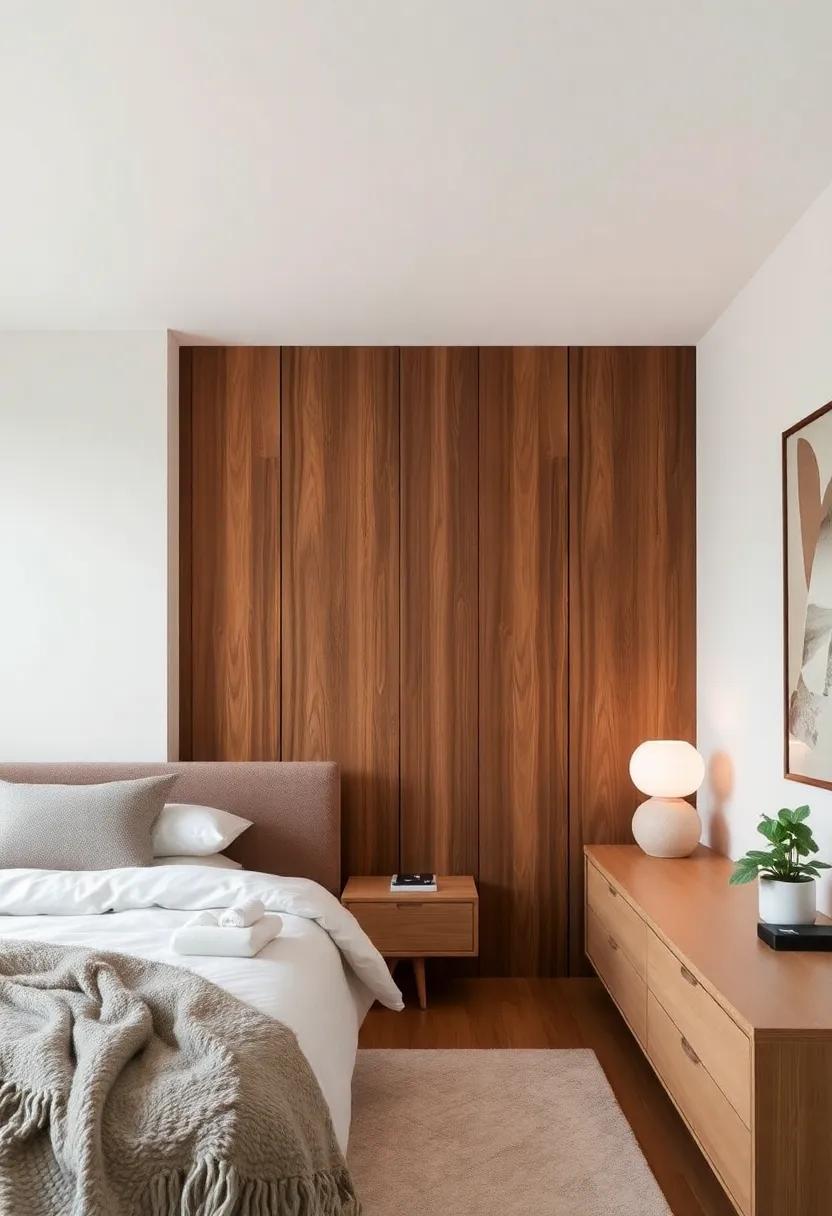
Creating a serene and inviting bedroom environment is essential for restful sleep and relaxation, and incorporating natural elements can significantly enhance this atmosphere. Consider using natural textures and organic materials in your decor to bring the calming influence of nature indoors. Opt for wooden furniture with a light finish,soft cotton or linen bedding in earthy tones,and elegant accessories made from stone or clay. By layering these elements, you create a cozy sanctuary that promotes tranquility and connection with the natural world.
To truly embody biophilic design,introduce various plant species that thrive in indoor settings. Not only do they improve air quality, but their vibrant greenery can elevate your mood. Here’s a simple list of wonderful indoor plants that can thrive in your shared bedroom:
- Snake Plant: Low maintenance and hard to kill.
- Pothos: beautiful trailing vines that thrive in various lighting.
- Peace lily: Elegant blooms and air-purifying qualities.
- Spider Plant: Great for hanging baskets and easy to care for.
moreover, incorporating a small indoor water feature can add soothing sounds to the ambiance while enhancing the aesthetic appeal of your space.
Mindful Arrangement: Crafting Tranquil flow with Intentional Placement
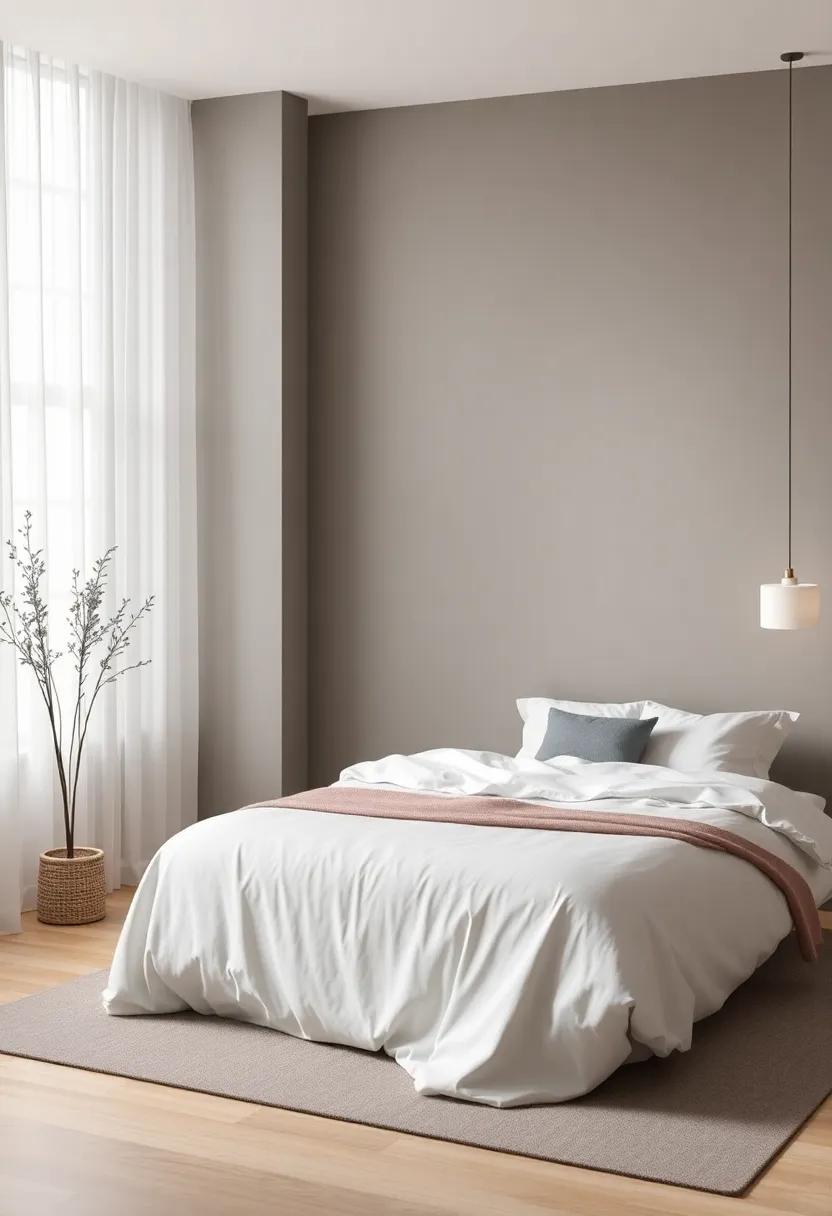
Creating a serene atmosphere in a shared bedroom is all about intentional placement and mindful arrangement. Start by considering the flow of the room—how you navigate the space and where your eyes rest. Furniture layout can make all the difference, so opt for arrangements that enhance harmony and accessibility. prioritize functionality by positioning beds to maximize natural light while ensuring that pathways remain uncluttered. Additionally, utilize vertical space with wall-mounted shelves or floating nightstands, allowing for personal touches without overwhelming the area.
To further nurture a restful environment, integrate elements that promote tranquility. Incorporate soft textiles such as cushions or throws in soothing colors,and employ layered lighting to give each occupant control over their ambiance. Consider introducing a designated corner with plants or natural elements that not only beautify the space but also enhance air quality. Here are some ideas to consider for intentional placement:
- Bed placements: Place beds diagonally to open up the room.
- Shared storage: Multi-functional furniture like ottomans or benches.
- Zones: Create separate zones for study, relaxation, and sleep.
Communal Spaces: Designing Shared Areas for Productivity and Relaxation

Creating communal spaces that balance productivity and relaxation in shared bedrooms requires thoughtful design and strategic layout. Consider incorporating multi-functional furniture that can transform the environment depending on the time of day or individual needs. As a notable example, a desk that converts into a dining table can foster both study sessions and casual meals. Use room dividers or curtains to create separate zones, enhancing personal space while still promoting interaction. Ensure adequate lighting for each area, combining warm and bright tones to cater to various activities and enhance the overall ambiance.
To further maximize harmony and functionality, install shelves or wall-mounted storage that allows residents to personalize their area without cluttering the floor space. Utilize a color palette that encourages tranquility and focus, such as soft blues and greens, while integrating vibrant accents to stimulate creativity. Below is a simple table to visualize potential layout elements and their functions:
| Element | Function | benefits |
|---|---|---|
| Desk | Workspace | Increased productivity |
| Convertible Sofa | Sitting/sleeping | Flexible use of space |
| Rug | Define areas | Added warmth and comfort |
Final Thoughts
As we conclude our exploration of the art of shared bedroom bliss, it’s clear that the magic lies in creativity, flexibility, and thoughtful design. By embracing smart layout ideas and harmonizing decor, you can transform any shared space into a sanctuary that reflects both personalities while maximizing comfort and functionality. Remember,the essence of a successful shared bedroom isn’t just about aesthetics—it’s about fostering an environment where coexistence flourishes.
Whether through multifunctional furniture, clever storage solutions, or personalized touches that celebrate individuality, every decision you make can contribute to a peaceful and inviting atmosphere. As you embark on this journey, let your creativity take the lead, and don’t hesitate to experiment until you find the perfect blend of space and harmony. After all, a shared bedroom is not just a place to sleep; it’s a canvas for connection, creativity, and comfort. Happy decorating!
